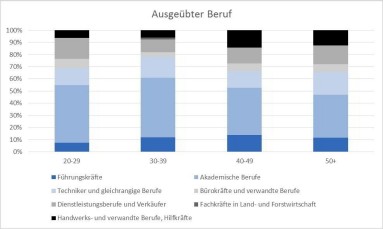ZRH3039 – Focus on an age group
The 30- to 39-year-olds are the future of the city of Zurich: One in five people today belongs to this age category, more than half of whom were born abroad. However, the age group, which is central to urban society, has only a sufficient democratic say and formal political participation – how does this shape the city of Zurich?
Anna Schindler, 2018-09-04
"Certainly, you see something different in New York than just America: only the small towns and the small countries are completely themselves – a real capital grows beyond its own borders." This is what the French philosopher and writer Simone de Beauvoir writes on 9 April 1947 in her diary, which accompanies her on the four months of her journey across the great cities of post-war America. "It would mean declaring a strange love for America if New York were to be declared non-American under the pretext that it was open to the whole world."
Zurich is not New York – but perhaps a little less Swiss than other cities in this country. Zurich does not exert the same fascination as the city that is regarded in the Western world as the epitome of the big city, the melting pot of cultures, skin colors, countries of origin, as a symbol of the departure into new, foreign, hard worlds. New York has shaped the image of a metropolis with a skyline of skyscrapers and street canyons between many thousands of squares of facades, at the foot of which there is a colorful coexistence and coexistence on the sidewalks, like no other city. In terms of cosmopolitanism, however, Zurich, twenty times smaller, is in no way inferior to New York – on the contrary.
Trailer ZRH3039
Zurich is popular with 30- to 39-year-olds: they form the largest age group and, according to forecasts, will soon reach the 100,000 mark. Around half of them do not have a Swiss passport and cannot vote or vote. 90 percent of 30- to 39-year-olds are employed, preferably full-time. Many of them are geographically mobile. Urban Development Zurich pursues the different realities of life and questions of this age group as part of the project "ZRH3039 – An Age Group in Focus".
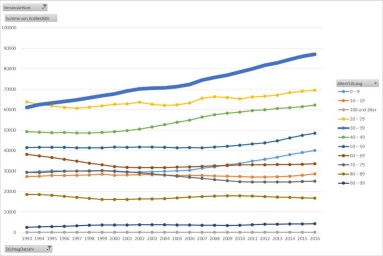
In the past ten years, the city on the Limmat has fundamentally changed its face. Their population is becoming more and more international and younger. The average age (median age) of all city Zurich residents is 37.6 years at the beginning of 2018, in New York 38 years. One age group in particular is decisive for this low number, which has been falling continuously since 1993: the cohort of 30- to 39-year-olds. With over 90,000 people, they are now the largest age group in the city of Zurich, have grown steadily for 25 years due to international immigration, and make up 21 percent of the urban population – in New York it is 16 percent. Since 2009, the proportion of people born abroad in Zurich has been the majority of the age group: over 55 percent – in comparison, the proportion in the city as a whole is 40 percent.
This proportion of 30- to 39-year-olds has doubled since 1993: the age group is growing primarily through migrants. They come for work: In nine out of ten cases, the 30- to 39-year-olds in the city of Zurich are employed, the majority of whom are full-time and in academic professions. Seven out of ten have a tertiary degree, 30 percent earn in the upper and highest wage classes: 50 francs and more per hour worked. This means that the age group between 30 and 39 is enormously important for the economy of the city of Zurich, but socially it has a profile that differs from all other age groups in the city. Zurich's 30- to 39-year-olds are highly integrated into the labour market, but largely excluded from democratic participation.
"Life takes on an overstretched dimension here, because you feel that you are at a way of the cross of the world," Simone de Beauvoir wrote about New York in 1947. Zurich 2018 represents a way of the cross or a focal point on the global map of international migration for 30- to 39-year-olds. Only 5.5 percent of the age group has lived in Zurich since birth, almost 37 percent have moved directly from abroad, almost 58 percent from Switzerland. This age group is correspondingly diverse: it is representative of a city that is mostly made up of minorities – and thus also reminds of the Melting Port New York (43.1% white, 24.4% African American and black, 29% Hispanic or Latino, 13.7% Asian...).
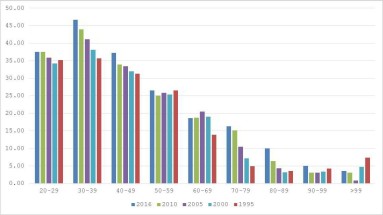
This melting pot is important for the city of Zurich. The 30- to 39-year-olds make a significant contribution to the economic strength of the city – and also form the social foundation. They are at the age at which you start families and settle down – for example in Zurich – despite the high mobility that characterizes their everyday lives and also even though many of them still live in childless households or in shared flats. At the same time, they pose a major challenge to urban society: they feel "not at all good" represented by the city and municipal council more often than the other age groups. The lack of political rights as foreigners is cited and also that "too little" is being done for integration in general, although the concrete urban commitment to integration is considered sufficient.
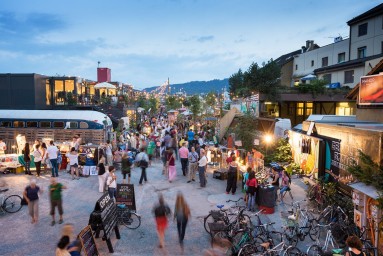
They are also struggling with obstacles on the housing market: In the population survey of urban development, which has been carried out regularly since 1998, the age group of 30 to 39-year-olds shows the lowest satisfaction with the current apartment. Although the majority would like to see more living space created in the growing city of Zurich, they experience their own living environment as too dense or very densely built-up above average. 43 percent cite "housing problems" as one of the three biggest problems in the city. This is significantly more than the average of the total population (29 percent).
All these factors paint a picture that must make the city of Zurich sit up and take notice. What does this age group, which is so important for the liveliness of the city, need so that it feels comfortable in Zurich, so that many of them stay in Zurich even after 40? What can the city do to make 30- to 39-year-olds feel at home here and make Zurich their (chosen) home? What do the mobile, cosmopolitan high earners of Zurich want? And what can the city also demand from them – what can they give back to Zurich, which will help the city, which has a virulent interest in their integration?
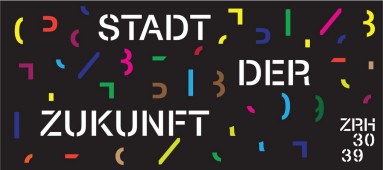
"Every city government wishes to be able to create a lively mix of density and diversity during its term of office," says Canadian author Doug Saunders, who dedicates his books to the social changes in cities due to migration and has just published a new work on the subject with "Maximum Canada". In his opinion, this requires not only flexible planning instruments to achieve structural density, but also ways and means to include the "voices of future and potential residents, not only those of those who are already there" – precisely because the "newcomers" are becoming more and more numerous. Giving a voice to those who don't have one in the existing political system is a big task. The city of Zurich will have to tackle them in order to maintain the diversity of its society and to welcome the "newcomers". Understanding how the largest and most diverse age group in the city lives, thinks and expresses itself is a first step towards this. "ZRH 3039" is a first approach.
More information
As part of "ZRH3039", Zurich's urban development has dealt in depth with Zurich's largest and most diverse age group.Numerous public events shed light on facts, reflected on the realities of life and asked about challenges for the city of the future.
